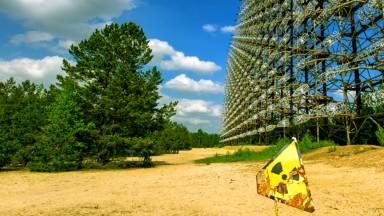
Shortly after the first time we identified the origin of the single Fast Radio Burst (FRB), the Russian Pushchino Radio Astronomy Observatory announces to have discovered other 9 FRBs in the direction of two galaxies near the Milky Way. One of which, among other things, repeats itself over a period of time. It is only the third of this type ever discovered.
Fast Radio Burst
They certainly come from so far away, but (for the vast majority of them) from where exactly no one knows where. And we don't even know who or what generates them, even if the experts have some hypotheses in this regard (and no, the aliens are not among them).
The FRBs could have originated from variations of the ultra-intense magnetic field of neutron stars known as Magnetar, or derive from young neutron stars surrounded by bubbles of ionized gas as a residue of the supernova that generated them.
Nine New Signals
However, the characteristics of these new signals make us believe that they originate from much farther, that the other source. Therefore, they could be even behind M31 and M33. One of the impulses, furthermore, repeats itself over time. An extremely rare type, of which only two previous examples are known, and which experts believe to be of great importance for determining the origin of the phenomenon.
A little light on the mystery
Just a few days ago, an important announcement was published. For the first time, researchers have pinpointed the origin of the single fast radio burst, and it is a galaxy 3.6 billion light years away from us. That's an exceptional effort considering that the single FRBs have a duration of a few milliseconds.
As described by the article published, when researchers from The Commonwealth Scientific and Industrial Research Organization (CSIRO) identified the burst FRB 180924 thanks to The Australian Square Kilometre Array Pathfinder (ASKAP), They asked their colleagues at the Keck Observatory in Hawaii, the Gemini South Telescope and "The Very Large Telescope" array (VLT) of the European Southern Observatory to also point their instruments in the direction of the fast radio burst. This is how they got back to the source: A medium-sized galaxy in which the birth rate of stars seems very low. In short, it is different from the source identified for the repetitive FRB, in which instead the formation of new stars seems frequent.
With new discoveries come new questions and the chances of finding answers will increase the more FRBs will be discovered.









